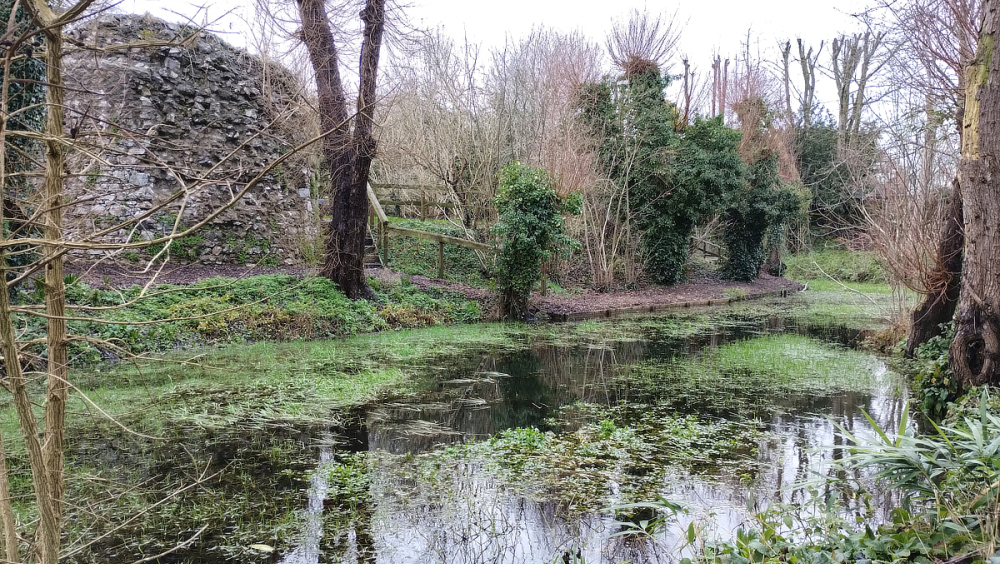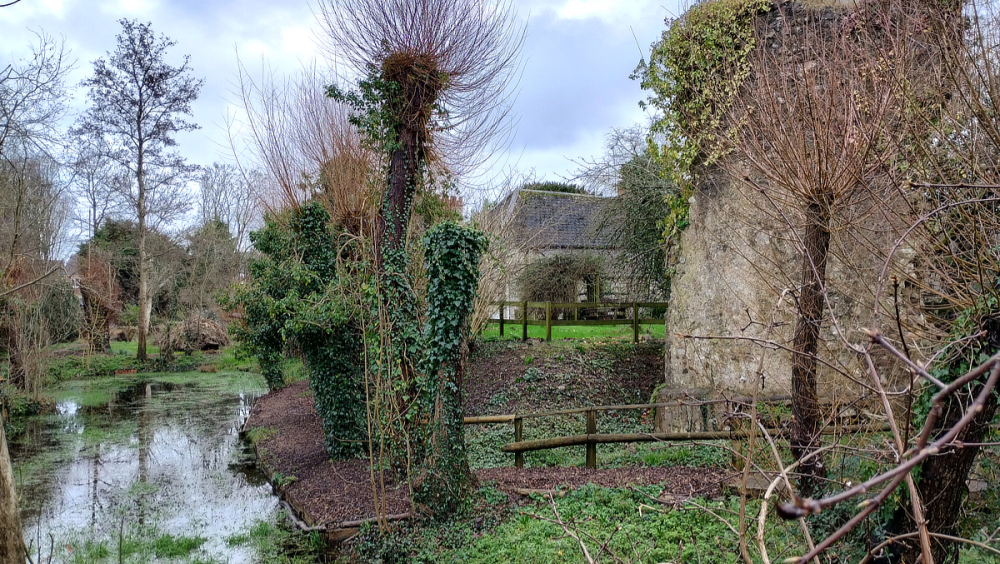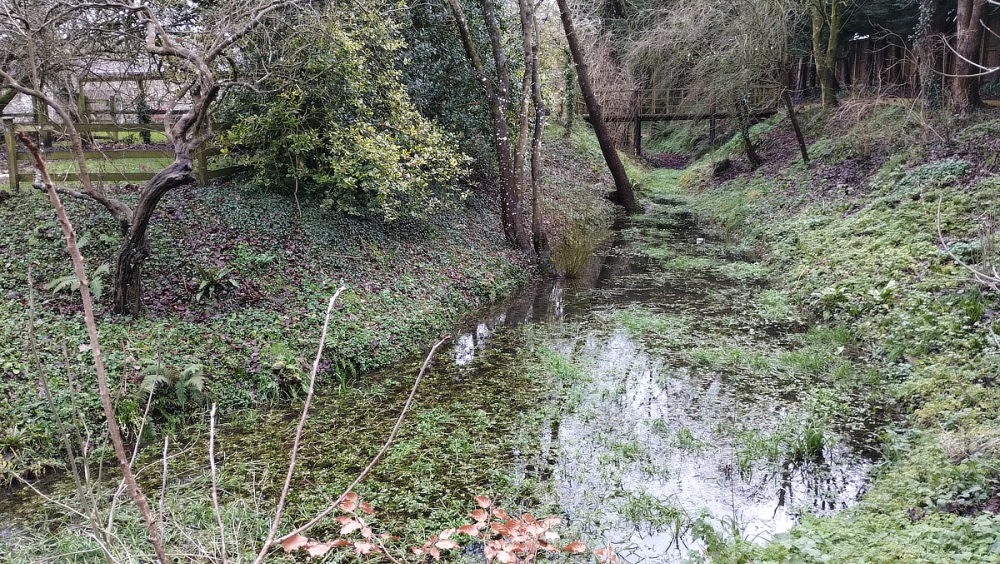Exploring Deep Historic Links with Europe, using Pottery Sherds Recovered from the Castle Moat
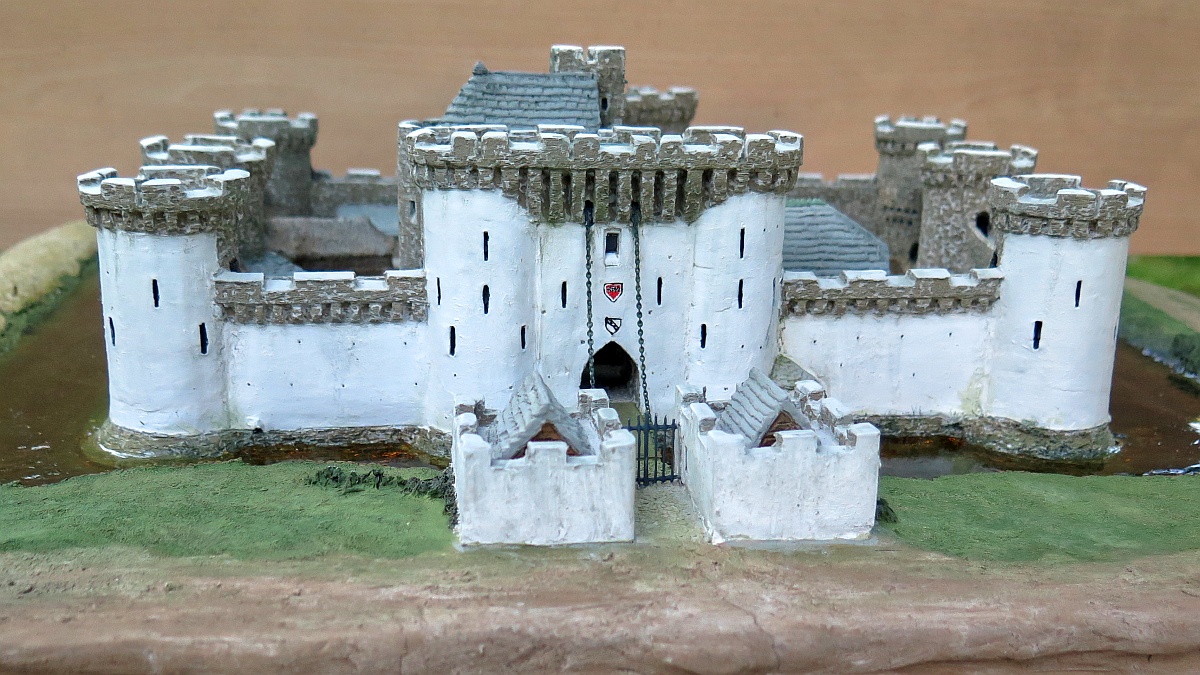
“Deep Historic Links with Europe, Explored via our Pottery Sherds” was Hemyock Castle’s special display created as part of the European Year of Cultural Heritage 2018, for England’s Heritage Open Days. We propose to extend this, partly by looking for more artefacts in Hemyock Castle's moat silt.
These pottery sherds most likely came from moat silt spread on the site in former times, to fertilise the soil. But because of modern regulations, the moat has now become badly silted.
We now propose to clear silt from Hemyock Castle’s moat, and to spread this on the site. This will improve the natural habitat for birds, insects and wildlife; increase the water capacity making it more effective at mitigating local flooding caused by surface run-off from adjacent housing estates; allow the recovery of artifacts.
Where possible, artefacts will be displayed on-site, adding to interesting historical information about the site.
Young King Richard II (Richard of Bordeaux), who so bravely rode-out to defuse the 1381 Peasants’ Revolt, needed to bolster his support against the powerful Devon lords. So in 1380, he granted permission to loyal Sir William Asthorpe and his Norman French heiress wife Margaret Dynham, to build Hemyock Castle around their much older fortified manor house.
Margaret’s father, Oliver, had been knighted in 1348, after the brutal siege of Calais. She had been orphaned by the Black Death and placed in the care of her uncle, the powerful Sir Guy de Brienne KG. Her marriage aged 15 to Sir William in 1362, had scandalised jealous local society. Sir William and Lady Margaret died in 1399. Yorkist King Richard was deposed in 1399 by Lancastrian Henry Bolingbroke, later King Henry IV, and then was probably starved to death. This led to the later bitter 15th Century “Wars of the Roses” between supporters of the Yorkists and the Lancastrians.
Today, Hemyock Castle site is a peaceful oasis of nature in a bustling village. It is a scheduled ancient monument containing the remains of a small moated medieval castle built around an older manor house. Its plan is based on designs used during the Crusades, to defend sites on flat land.
In the 1660s, after two brutal sieges during the English Civil War, the castle was “slighted” (destroyed). The site was converted to a farm, structures were repurposed, castle stone was sold or used for building, leaving remains of a massive gatehouse, towers and walls. The stream which had run through the moat was diverted with the help of skilled Dutch water engineers who’d helped to drain the nearby Somerset Levels. The eastern moat was filled in to form a farmyard. The tree-lined western and northern moat remain, providing a valuable habitat for birds, insects and wildlife, and also acting as useful flood control by taking surface water (and silt) from the adjacent modern housing estates, holding it, then releasing the water gradually down to the River Culm.
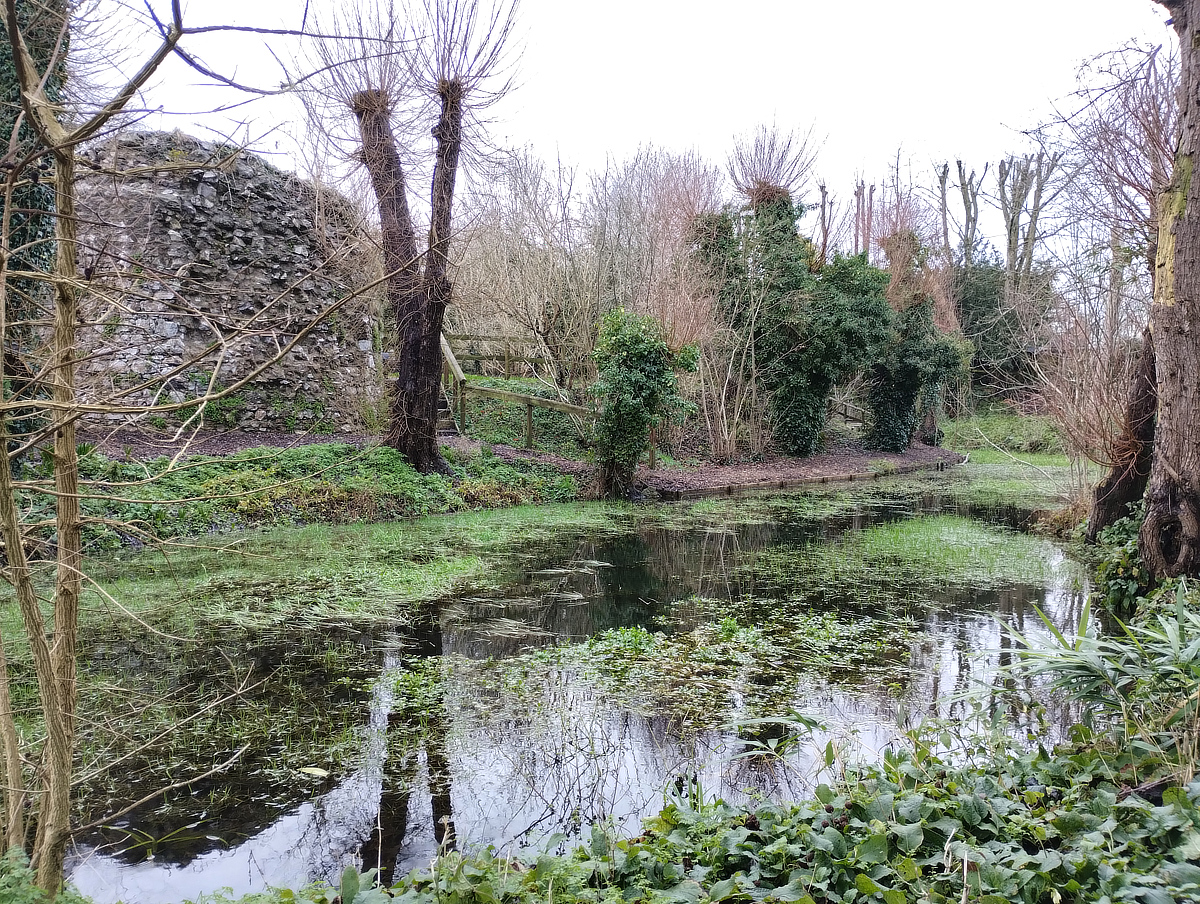
In former times, this moat would have been cleared-out each year and the silt spread, used to fertilise the soil. But modern regulations make this more difficult, so the moat is now badly silted. It is now a poorer natural habitat and has much less capacity available as flood-control.
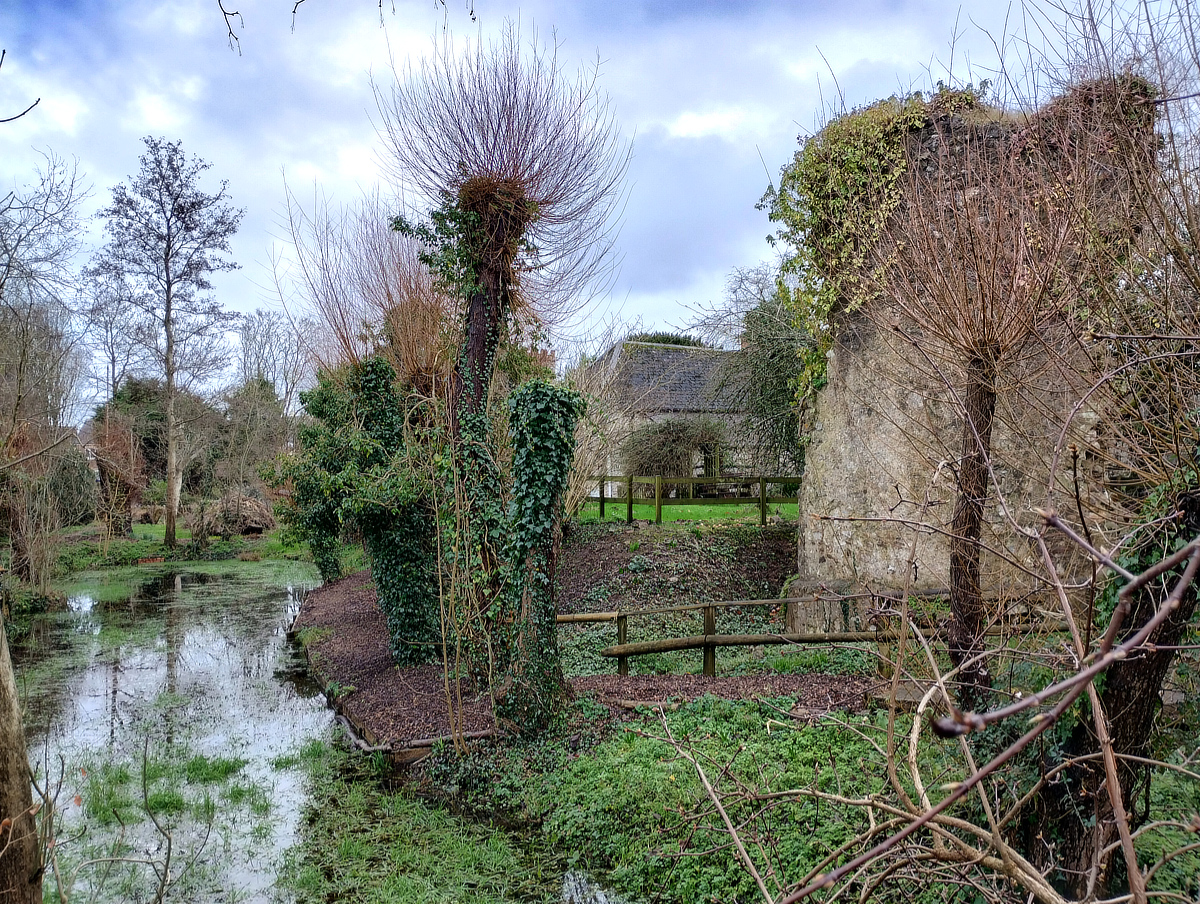
A surprising variety of pottery sherds has been found on site, probably spread from the moat silt. This pottery spans many centuries, and originated from all over Europe. Our displays include slag from Roman iron smelting; part of a 12th or 13th century Rouen jug, possibly brought back from Margaret Hydon’s 1322 pilgrimage to Pontigny Abbey, Burgundy; pottery from France, Italy, Portugal and Spain; 16th and 17th Century German Bartmann / Bellarmine and Raeren Pots possibly imported by Civil War mercenaries. There is even some Chinese porcelain. We display this with explanations including outlining who would have used it. We also keep some unsorted sherds for visitors, especially children to examine and handle; showing that what may look like bits of broken flower-pots is actually much more interesting. They learn what to look out for.
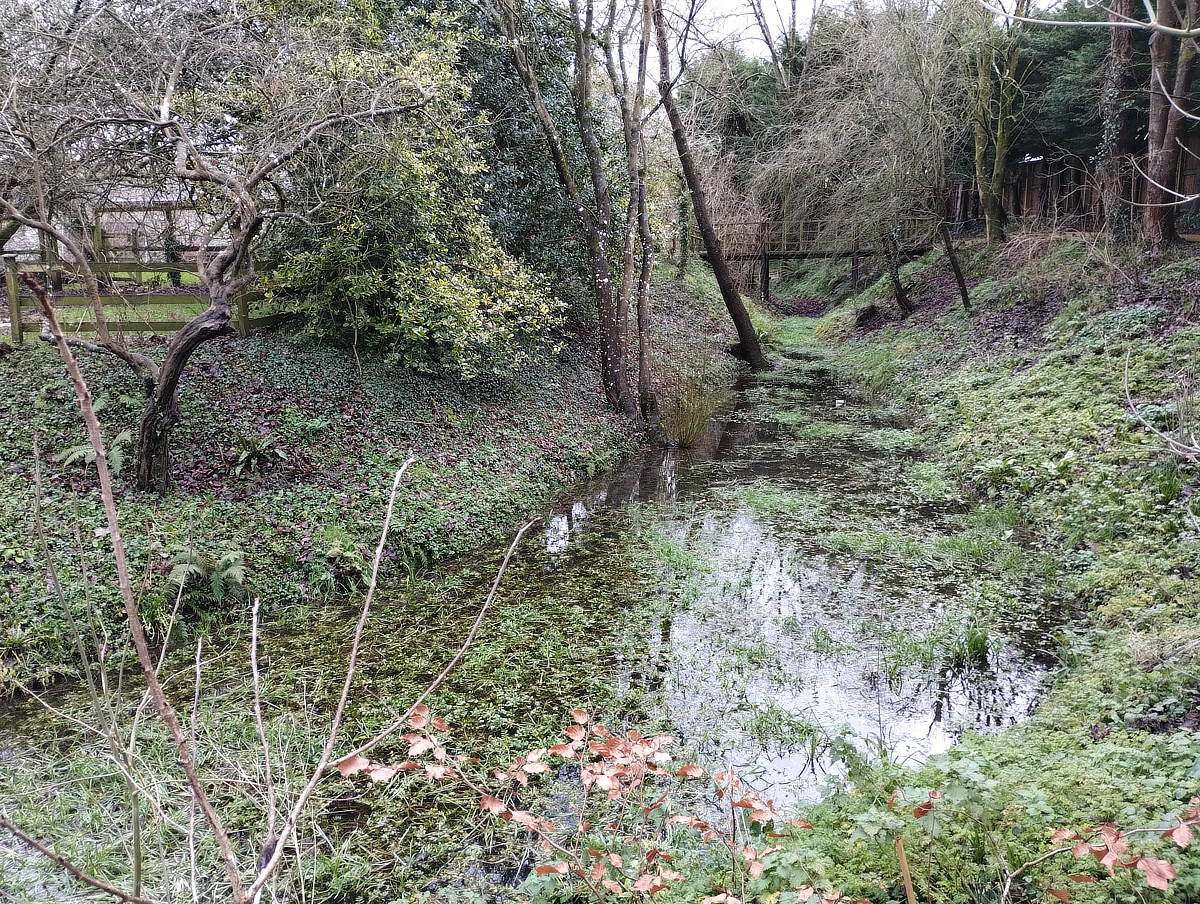
We propose to clear-out the moat, as deep as possible. The silt would remain on site, to be sifted for any artifacts. This will require supervision by an archaeologist, workmen, and funding. In suitable weather, with a small digger, it should take 3 workmen no more than a couple of weeks.
Clearing these sections of moat would bring many benefits:
• Improve the natural habitat for birds, insects and wildlife;
• Increase the water capacity, so make the flood control more effective;
• Probably reveal more historical artifacts which add to knowledge of this site and area.
Few historical records remain. Modern UK policy is to not excavate historic sites; but to preserve them undisturbed for future generations. Artifacts found in the moat silt could provide an interesting window into the past. This is in addition to the ecological and environmental benefits of clearing the moat silt.
A surprising variety of pottery sherds has been found on the Hemyock Castle site, probably spread from the moat silt. This pottery originated from all over Europe and spans many centuries, showing close family, cultural and trading links with mainland Europe. Our displays include slag from Roman iron smelting; part of a 12th or 13th century Rouen jug, possibly brought back from Margaret Hydon’s 1322 pilgrimage to Pontigny Abbey, Burgundy; pottery, including oil and wine containers, from France, Italy, Portugal and Spain; 16th and 17th Century German Bartmann / Bellarmine and Raeren Pots possibly imported by Civil War mercenaries after Europe’s 30-years war.
